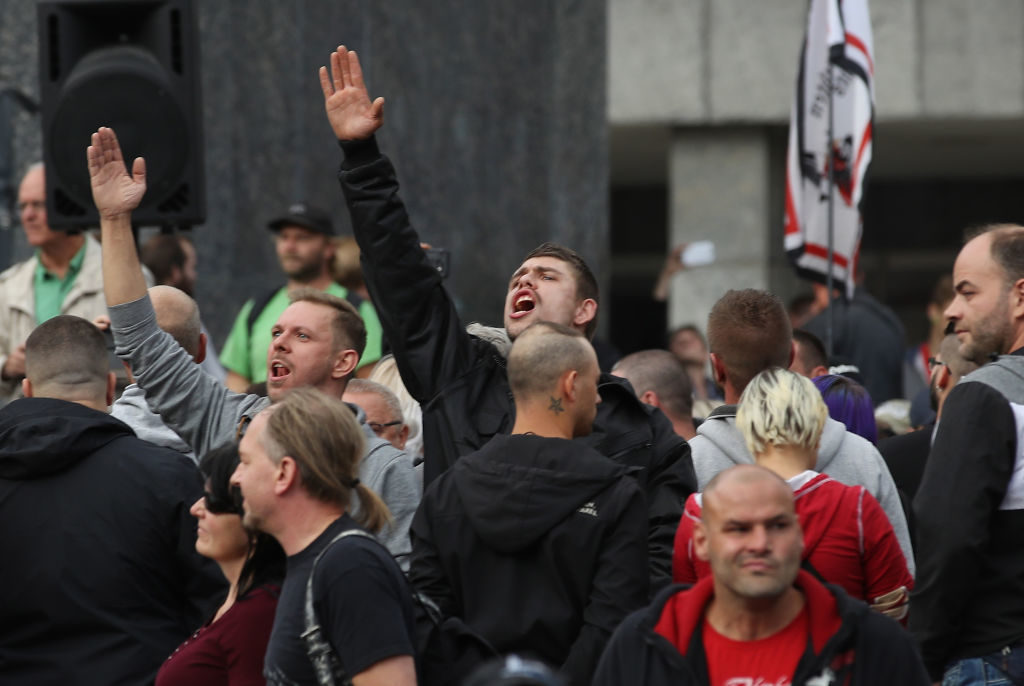Politics
Who Says Art Is Useless? A German Art Collective Outs 25 Neo-Nazis in an Online Sting Operation
The far-right extremists thought they got away with rioting in the city of Chemnitz in August.

The far-right extremists thought they got away with rioting in the city of Chemnitz in August.

Henri Neuendorf

A left-wing German art collective is using its creativity for a cause. The group’s members announced on Wednesday that they had identified dozens of neo-Nazis by luring them into an elaborate digital trap.
In August, far-right groups gathered in the east German city of Chemnitz for a multi-day rally that quickly turned violent. Fascist extremists chased and harassed immigrants, vandalized property, made Nazi salutes (which is illegal in Germany), and clashed with riot police. But most of the demonstrators who caused the unrest managed to evade arrest and prosecution.
In response, the leftist artist and activist group Center for Political Beauty (ZPS) made it their mission to bring as many neo-Nazi rioters to justice as possible. After the unrest, the activists began collecting footage and images of rioters and cross-referenced it with publicly available social media profiles.
The group built a website with information and pictures of more than 1,500 of the estimated 7,000 Chemnitz demonstrators and sent out a newsletter urging the public to come forward with further information. But the public appeal turned out to be a trick. Programmers working with ZPS deliberately designed the site so visitors could only see 20 profiles at a time, encouraging the fascists to use the search function to find out if they themselves had been named.

A man raises his arm in a Heil Hitler salute towards heckling leftists at a right-wing protest gathering in Chemnitz, Germany. Photo: Sean Gallup/Getty Images.
“The first thing they’re doing is using the search function on the website to input their own name, somebody they know, but who nobody else knows, in order to see if this website really works,” ZPS artistic director Philipp Ruch told the Daily Beast, “to see if it’s possible that we identified 1,500 people.”
As news of the site spread through Germany’s underground fascist networks, far-right websites, and message boards, neo-Nazis started sharing the link with one another and searching for their own names. According to Ruch, the search function helped identify approximately 25 additional rioters they hadn’t already recorded. “What we got was quite a network of who knows who, and who else was in Chemnitz,” he explained. ZPS revealed the hoax on Wednesday.
The group’s aim, Ruch said, was to find a 21st-century solution to fight modern fascism, which often lurks beneath society’s surface. Online data collection has proven to be an effective weapon. “We thought about a new de-Nazification in Germany and how it could work,” he said.
This is by no means the first political action carried out by the collective. ZPS has previously coordinated funerals for migrants who died on their way to Germany and constructed a massive replica of a Holocaust memorial outside the home of a far-right politician. Although Ruch acknowledges the collective’s work has made them a target, he told the Daily Beast: “I don’t want to live in a country where I can’t do radical political art.”